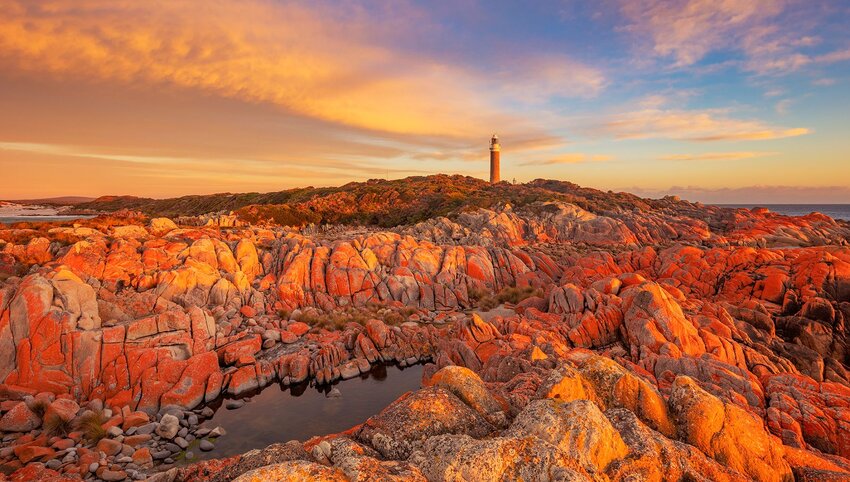Affectionately referred to as the "floating continent," Australia is a vast and diverse nation tucked away in the southern hemisphere. Breaking apart from the supercontinent of Gondwana over 45 million years ago, Australia’s isolation has created some of the most fascinating natural scenery in the world, with distinctive flora and fauna to boot. It's hard to narrow down the best views in this beautiful nation, but here's our pick for a few of the landscapes you can't miss when traveling down under.
Whitsunday Islands, Queensland
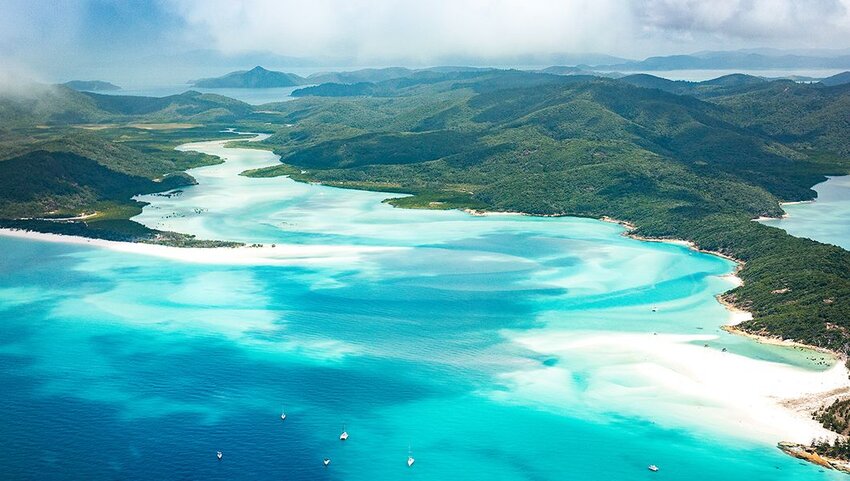
Undulating currents like swirling tethers of cloud trapped in the milky, turquoise waters of the Coral Sea. These are the Whitsunday Islands on the northeastern coast of Queensland. Their location in the Great Barrier Reef itself makes the Whitsundays a great place to base yourself for a visit to this spectacular natural wonder. Pristine snorkeling conditions, world renowned beaches, and stunning views make a trip to the Whitsundays unforgettable.
Stay in the town of Airlie, on the nation's northeastern shore, and from which you can explore the entire region. One of the best ways to enjoy the islands is by sailboat, up close and personal with the azure water and teeming wildlife. Be sure to catch the ferry from Airlie to Whitehaven Beach on Hamilton Island, one of the most beautiful stretches of sand in the world.
Bay of Fires, Tasmania

One of Australia's biggest islands, Tasmania is a destination in itself and boasts countless stunning landscapes to explore. One of the most exquisite is the Bay of Fires, located on the island's eastern shore. Originally named Iarapuna by the Kunnara Kuna tribe, British explorer, Tobais Furneaux, renamed it the Bay of Fires after seeing campfires on the beach’s shore, though the vibrant orange lichen that grows along the beach’s stones could have easily inspired the name as well.
The Bay of Fires itself is more a string of bays and beaches than a single destination, with plenty to see and do. Pay a visit to the striking Eddystone Point Lighthouse, the official end point of the Bay of Fires, surrounded by those iconic lichen-covered boulders. Explore the capital city of Hobart, where you should stop by the famed and quirky Museum of Old and New Art.
Uluru, Northern Territory
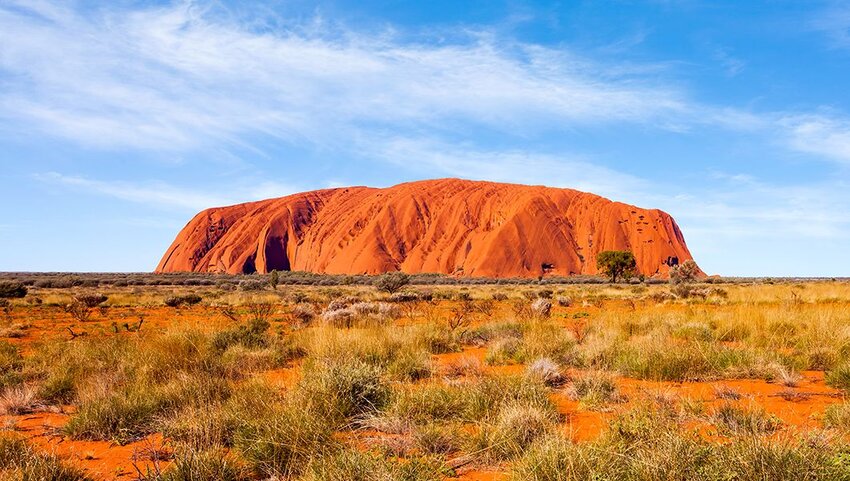
Perhaps one of the most iconic images of Australia is Uluru. This immense ochre rock, rising out of Australia’s Outback, is as much an iconic landmark as it is a sacred monolith. For the Anangu peoples of the Northern Territory, Uluru (formerly Ayers Rock) is a keystone of their cultural heritage. Over 550 million years old and made entirely of sandstone, it is said that Uluru was created during The Dreaming, a historical event in aboriginal culture when ancestral beings roamed the barren landscape.
Today, Uluru is a popular recreation area that still promotes indigenous rituals and cultural education. A walk around the base of the rock, about six miles in total, is a great way to get a true sense of how gargantuan the monolith really is and to see evidence of ancient inhabitants in the form of rock art. Watch the sun set against the rock itself for a stunning show as the sandstone comes alive, almost as if in a blaze of fire, for a memorable end to your visit.
Kakadu National Park, Northern Territory
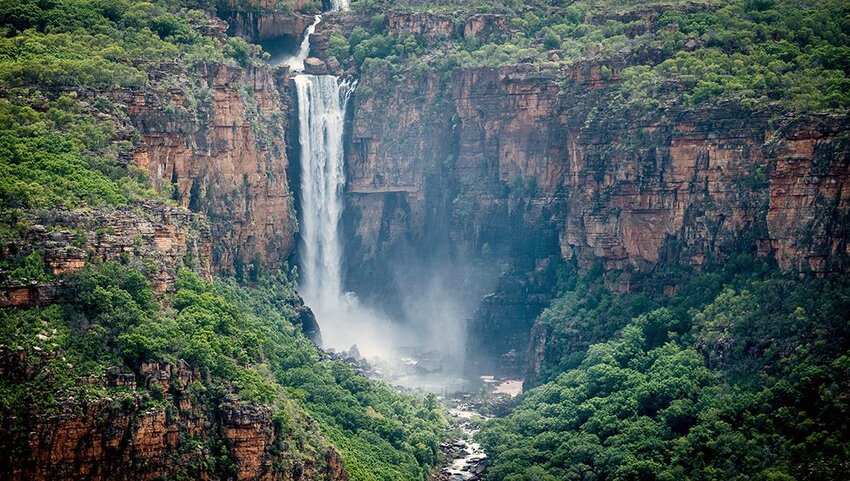
As with Uluru, Kakadu National Park is a sacred area to the indigenous people of Australia and has been continuously inhabited for over 65,000 years. This dual UNESCO World Heritage site is home to possibly the best examples of aboriginal art in Australia.
At 20,000 square miles, it will take you more than a day to really do the park justice so reserve a good chunk of time to get a taste of everything and have a chance at seeing diverse wildlife and scenery. Be on the lookout for dangerous, yet beautiful creatures in Kakadu National Park. This is the home of crocodiles, venomous snakes, and all manner of poisonous creatures, as well as one-third of Australia’s colorful bird species.
Float along the park’s famous Yellow Water Billabong, hike out to Jim Jim Falls, or gaze in wonder at the rock art in Ubirr and Nourlangie. Whatever you choose to do in Kakadu National Park this ecological wonderland won’t disappoint.
Bungle Bungles, Western Australia

An almost alien landscape, the Bungle Bungles are a unique geological feature. Tucked into the heart of an area known as the Kimberly, a vast expanse of rural wilderness in the far northwestern part of Australia, the Bungle Bungles are the best example of sandstone cone karsts in the world. The orange and black stripes characteristic of the karsts are a natural phenomenon caused by cyanobacteria.
This UNESCO-listed site is a popular stop-off on a trip down the Great Northern Highway. With countless walking trails snaking their way through the park, discovering the Bungle Bungles on foot is the best way to experience them. Squeeze through the narrow Echidna Chasm, explore amongst the tiger-striped karsts, or experience a guided hike through Cathedral Gorge, the Bungle Bungles are a great day trip when traveling through The Kimberly.
The Twelve Apostles, Victoria
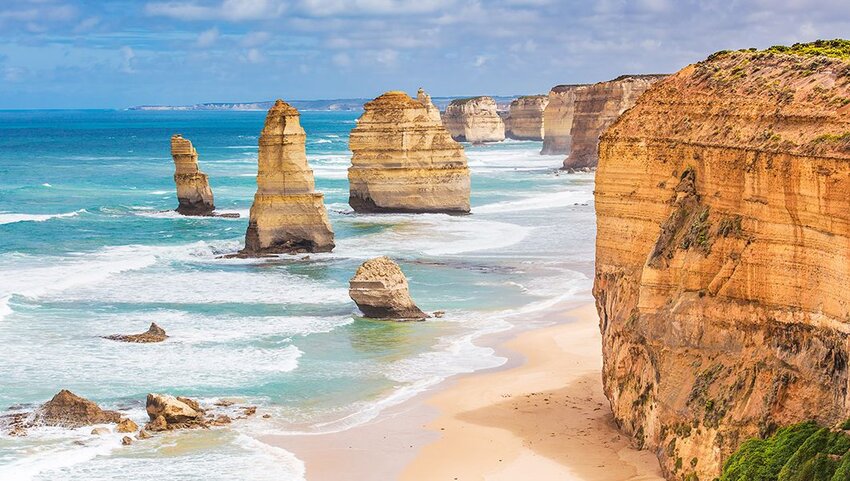
One of the most popular road trips in all of Australia, the Great Ocean Road is at the top of travelers' bucket lists on a visit to Oz. The most iconic view of this journey? The Twelve Apostles.
Located along a popular stretch of the Shipwreck Coast, the Twelve Apostles are a geologic rock formation caused by sea erosion over the last 5 to 15 million years. Mother nature has taken its toll on these stark beauties and only eight are left standing today, one of them collapsing into the sea only 17 years ago.
There are several ways to view these natural wonders. The Gibson Steps, although a bit treacherous, offer views from the beach below while the visitor’s center is the most common way to see them and without much effort. For a splurge, book a helicopter flight to get a bird's eye view.

